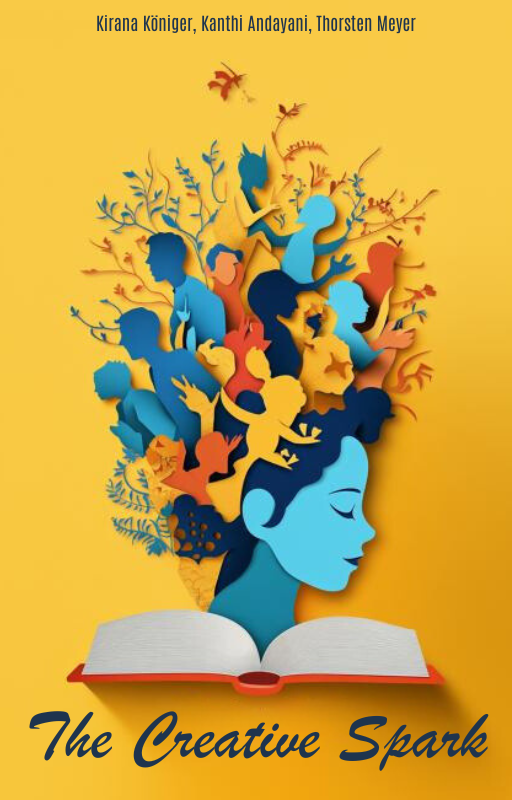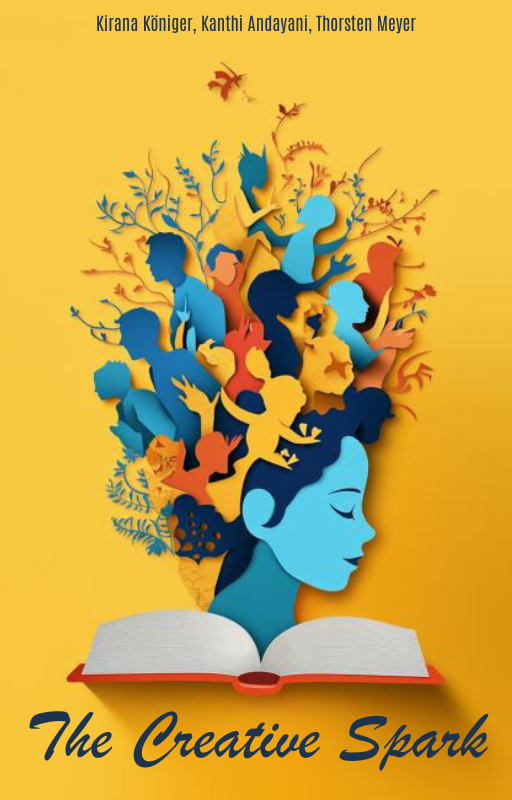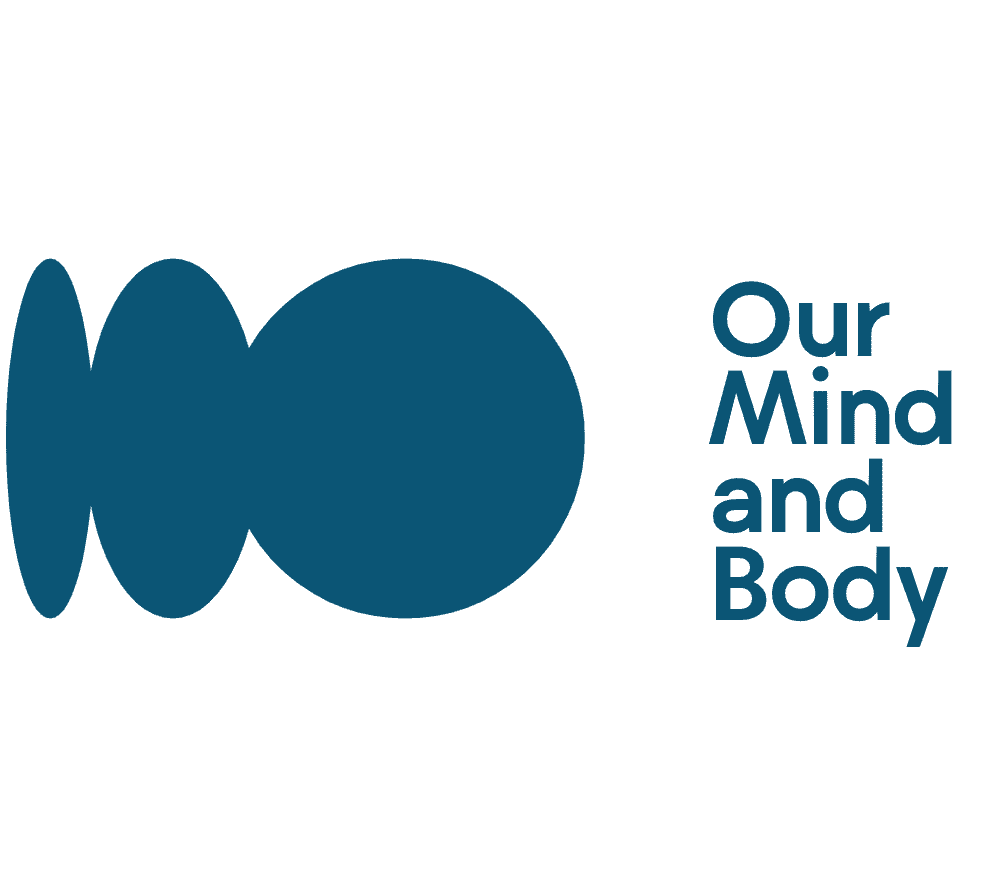Personal Growth
Relax and Unwind: Mastering Progressive Muscle Relaxation for Stress Relief

Progressive muscle relaxation is an effective method for reducing physical tension and stress. It involves intentionally tensing and releasing various muscle groups in sequence to promote deep relaxation of both the mind and body. This practice can be incorporated into your daily routine or utilized as necessary to manage the demands of daily life.
The goal of progressive muscle relaxation is to recognize when you are feeling tense so that you can take action quickly to release it. By using this technique regularly, you will become more aware of how your body reacts to stress and learn how best to counter its effects on your overall well-being.
This simple exercise involves consciously contracting a specific group of muscles while taking slow, steady breaths before relaxing them again. With practice, you’ll find yourself able to relax quicker each time which results in greater relief from the physical tensions caused by stress.
Benefits
Progressive muscle relaxation (PMR) is a powerful technique for reducing physical tension caused by stress. It can have positive effects on both your mental clarity and emotional wellbeing, as well as improving sleep quality and helping to reduce anxiety.
The practice of PMR involves tensing and then relaxing each part of the body in turn, from head to toe. This helps you become aware of areas where you are holding onto unnecessary tension and encourages these muscles to relax. In addition to relieving any existing physical symptoms, regular practice will help prevent future onset or intensity of stress-related tension.
When done properly, this exercise should induce an overall sense of calmness that can last long after the session has finished. Regularly taking time out to use this method will help maintain good mental health and provide respite from daily worries. As you prepare for the exercise it is important to choose a comfortable position where you won’t be disturbed – lying down may work best but sitting up with back support can also be beneficial.
Preparing For The Exercise
As a certified stress management specialist, I’m here to help you prepare for progressive muscle relaxation techniques. This exercise is designed to ease the physical tension that stress causes in your body. With this exercise, you can expect relief from muscular discomfort and improved ability to cope with life’s challenges.
Let me now explain how to prepare for the exercise. Before beginning the process of progressive muscle relaxation, it’s important to have an appropriate environment that will facilitate relaxation and focus. First, find a quiet place where distractions are minimal or eliminated entirely. You may want to dim the lights or add some soothing music if it helps you relax further. Make sure you’ll be comfortable by wearing loose clothing or removing footwear as needed. Then, lie down on your back in bed or on a yoga mat on the floor and make yourself comfortable using pillows and blankets as necessary. Finally, take a few long slow breaths before starting the exercises so you can settle into calmness and stillness.
Now that we’ve prepared ourselves mentally and physically, let’s move onto learning how to perform the exercises designed specifically for relieving muscle tension and providing physical stress relief!
How To Perform The Exercise
Now that you know how to prepare for the exercise, let’s look at how to actually perform it. Progressive muscle relaxation techniques are designed to help ease physical tension stress causes and can be done in as little as 10 minutes. To get started, begin by sitting or lying down in a comfortable position with your eyes closed and focus on relaxing each of your muscles one-by-one from head to toe. Start by tensing up your forehead muscles for several seconds before releasing them and taking deep breaths. Then move onto other body parts such as your face, neck, chest, arms and legs while continuing to take slow deep breathes between each section until you have gone through all of them. This exercise is meant to help relax the entire body so make sure you don’t rush through any particular area too quickly.
Once you have finished going through each of your major muscle groups, allow yourself a few moments just to sit back and enjoy the feeling of total relaxation before opening your eyes again. You may feel more relaxed after this exercise but if not try repeating it once more using fewer repetitions per muscle group for an even deeper level of relaxation. Now that we’ve looked at how to perform progressive muscle relaxation techniques, let’s explore what to expect during and after the exercise.
What To Expect During And After The Exercise
Engaging in progressive muscle relaxation techniques can be a deeply calming experience, but it’s important to know what to expect before you begin. Here is an overview of the physical effects and recovery time you may encounter:
- Physical Effects:
- Your body will become more relaxed during and after the exercise as your muscles release tension.
- You may feel lightheaded or dizzy when standing up if you have been lying down for the full exercise.
- You may also notice your breathing patterns slow down, which is natural and expected.
- Recovery Time:
- It usually takes less than 10 minutes to complete the entire exercise; however, this varies depending on how long each individual holds their contracted muscle.
- Afterward, there should not be any lingering fatigue or soreness due to the low-intensity nature of the exercise.
- Calming Techniques:
- During the exercise, focus on deep breaths and let yourself drift off into a state of relaxation while tensing then releasing each muscle group.
- Before beginning another session, take some time to mentally note any areas that still feel tense so you can pay extra attention to those during subsequent exercises.
With these expectations in mind, engaging in progressive muscle relaxation techniques can be an incredibly effective way to cope with life’s challenges and ease physical tension caused by stress.
Tips For Maximizing Results
Now that you know what to expect during and after the exercise, let’s look at some tips for maximizing results. Progressive muscle relaxation techniques are a powerful tool in reducing tension and helping people cope with life’s challenges. To start, it’s best to practice this technique when your body is relaxed and comfortable. Make sure you are sitting or lying down in a quiet space free from distractions. It is also important to focus on each part of the body while engaging in the exercises rather than rushing through them.
When doing the progressive muscle relaxation exercises, be mindful of any areas of tightness or soreness as these may indicate an area where stress has built up over time and needs extra attention. This could include clenching fists, grinding teeth, tensing stomach muscles, etc. At times like these, take slow deep breaths and consciously relax those tense parts of your body before proceeding further. Additionally, pay close attention to how your body responds throughout the entire process – if something doesn’t feel right or causes discomfort stop immediately so that you can readjust yourself accordingly (or seek medical advice).
Once you become more familiar with progressive muscle relaxation techniques, try experimenting with different variations such as using visualization tools or focusing on specific sounds/aromas/sensations to help reduce tension even further. The key is to find out which methods work best for you and allow yourself plenty of room for personalization within your routine so that it becomes easier to stay consistent with applying these strategies into everyday life.
Variations
Progressive muscle relaxation (PMR) is like a toolbox of techniques that can be used to manage stress and cope with life’s challenges. Each technique has its own unique way of helping people relax and ease the physical tension stress causes in their bodies; however, they all share one common theme: differentiation between tense and relaxed muscles.
| Technique | Description | Benefits |
|---|---|---|
| Tension-Releasing Exercises | A series of gentle stretches designed to reduce muscular tightness and improve flexibility. The goal is to move around your body in ways that create an overall sense of relaxation. | Increased range of motion, improved blood flow, relieved joint stiffness & pain. |
| Relaxation-Based Techniques | Activities such as deep breathing, guided imagery, and visualization are combined to help bring about a feeling of calm and inner peace. These activities allow for mindful awareness as well as mental clarity. | Improved sleep quality, reduced anxiety/stress levels, increased self-awareness & focus. |
| Breathing-Focused Practices | This type of exercise involves focusing on different areas within the body while taking slow and steady breaths. It leads to conscious control over both breath rate and depth which creates feelings of relaxation through out the entire body system. | Improved concentration & alertness, slowed heart rate & respiration, decreased cortisol levels & better oxygen delivery throughout the body . |
By using these variations together we can get more effective results from our PMR practice! Body scanning is another great technique that focuses on consciously moving attention through each area of the body noticing any sensations or emotions present without judgment or analysis. With this approach we learn how to become aware of what’s happening inside us so we can make adjustments accordingly by releasing tension where needed or just being with it if necessary. By doing this regularly we gain greater insight into ourselves while learning how to effectively manage our emotional states during times when life’s challenges come up again and again!
When To Seek Professional Help
When it comes to managing stress, it’s important to know when it’s time to seek professional help. It can be difficult acknowledging that we need assistance in this area of our lives, but sometimes the physical and emotional toll of unresolved stress becomes too much for us to manage alone. Here are some signs that indicate you may need additional support with your stress management:
- Your daily activities start feeling overwhelming or unmanageable due to persistent feelings of anxiety.
- You find yourself frequently avoiding situations because they make you feel anxious or fearful.
- You have difficulty sleeping because of worries about work or personal matters.
- You’re unable to concentrate on tasks due to intrusive thoughts and racing mind activity related to worrying about life events or challenges.
If any of these describe your current experience, seeking professional help from a qualified mental health provider is recommended. Stress management counseling, anxiety management therapy, psychological counseling services, muscle relaxation therapy—all of these can provide invaluable resources for dealing with stress-related issues in a safe and supportive environment. Professional mental health support can also offer coping strategies tailored specifically for your individual needs so you can address the underlying cause behind your heightened levels of tension and distress more effectively than if trying methods on your own without guidance from an expert in the field of psychology and/or psychotherapy. With proper care and treatment, individuals suffering under extreme amounts of stress can return back to their everyday life free from the debilitating effects caused by prolonged periods of high levels pressure and strain.
Alternatives To Progressive Muscle Relaxation
According to the American Psychological Association, 70% of Americans experience physical symptoms due to stress. Fortunately, there are a variety of alternative relaxation techniques that can help reduce this tension and bring balance back into our lives. Tai Chi is an ancient Chinese practice involving slow movements and deep breathing that helps relax both the body and mind. Mindfulness meditation encourages us to focus on the present moment in order to stay connected with ourselves while reducing stress levels. Yoga Nidra is a form of guided yogic sleep which focuses on calming the nervous system through visualization and breath awareness exercises. Deep breathing practices such as diaphragmatic breathing or pranayama have been shown to lower blood pressure and heart rate, helping ease tension from the body. Finally, guided imagery involves using creative visualization tools such as mental images or stories in order to relax tense muscles and calm racing thoughts.
These alternatives to progressive muscle relaxation offer quick relief for those seeking immediate stress reduction solutions but also serve as helpful long-term strategies when incorporated into one’s lifestyle over time.
Long-Term Stress Management Strategies
As we have discussed, progressive muscle relaxation is a great way to ease physical tension and reduce stress in the short-term. However, for long-term stress management, it’s important to develop strategies that help you better cope with life’s challenges. Self-management techniques such as mindfulness meditation and yoga can be effective tools for managing chronic stress levels over time.
In addition to these practices, maintaining overall mental health through healthy lifestyle habits should not be overlooked. A balanced diet and regular exercise are essential components of any successful stress management plan. Additionally, getting enough sleep each night will ensure your body has adequate time to rest and recover from stressful situations.
Taking care of yourself by making time for leisure activities like reading or listening to music can also provide relief from daily stresses and improve your sense of well-being. As part of an ongoing effort toward improving one’s self-care regimen, it is important to find new ways of relaxing every day so that you can stay resilient when life presents difficult tasks or obstacles. Incorporating various relaxation techniques into your daily routine will make all the difference when striving towards long-term stress management.
Frequently Asked Questions
Are There Any Risks Associated With Progressive Muscle Relaxation?
A recent study by the American Psychological Association found that nearly 75% of adults in the United States struggle to cope with mental and physical stress. Progressive muscle relaxation (PMR) is a powerful tool used to reduce tension and anxiety, yet many people are unaware of potential risks associated with this technique. As a certified stress management specialist, I’d like to address these concerns so everyone can practice PMR safely and effectively.
One major risk factor associated with progressive muscle relaxation techniques comes from those living with certain physical disabilities or age-related impairments. For example, individuals suffering from arthritis may find it difficult to contract their muscles appropriately when performing PMR exercises. Similarly, children under the age of 12 should avoid attempting any PMR activity without being supervised by an adult due to their developing motor skills and lack of body awareness. It’s also important for seniors over 65 years old to consult with a physician before starting any type of exercise program as they might be at greater risk for injury due to weakened bones and joints.
Fortunately, there are ways around these issues – gentle stretching activities can help those who have difficulty contracting their muscles while low-impact exercises such as yoga can benefit seniors looking for safe alternatives to traditional forms of PMR. Additionally, if someone feels overwhelmed trying out new relaxation techniques on their own, seeking guidance from a qualified professional could make all the difference in achieving successful results.
As long as one takes into consideration individual needs and limitations beforehand, progressive muscle relaxation can prove very beneficial in reducing overall stress levels both mentally and physically. With proper instruction and preparation, anyone can start practicing PMR safely and enjoy its positive effects!
Is Progressive Muscle Relaxation Suitable For People With Physical Disabilities?
As a certified stress management specialist, I’m often asked whether progressive muscle relaxation is suitable for people with physical disabilities. With the right guidance and support, this can be an effective tool for reducing physical tension and providing stress relief. Let’s take a closer look at how it works:
Relaxation Techniques
The process of progressive muscle relaxation involves consciously tensing and releasing muscles in the body to promote deep physical and emotional relaxation. This type of exercise helps reduce feelings of anxiety by calming the nervous system. It also encourages improved circulation, which can help alleviate stiffness or pain associated with certain forms of physical disability.
Benefits
There are many benefits to using progressive muscle relaxation techniques when dealing with physical disabilities. Here are some examples:
- Physical Benefits
- Increases blood flow throughout the body
- Improves range of motion in joints and muscles
- Reduces tension in neck, back and other parts of the body
- Mental Benefits
- Enhances focus and concentration
- Alleviates symptoms of depression or anxiousness – Heightens self-awareness
- Emotional Benefits
- Stimulates positive thinking patterns
- Helps manage difficult emotions such as fear, anger or sadness
With practice, these relaxation techniques can provide much needed relief from stress while improving overall well-being. There may be some challenges involved but they can be overcome through patience and consistency in practicing these methods regularly over time.
How Quickly Will I Start To Feel The Benefits Of Progressive Muscle Relaxation?
When it comes to managing stress, progressive muscle relaxation is a great choice for achieving quick results. It’s an effective technique that can help you reduce physical tension and relax your body. But how quickly will you start to feel the benefits of this practice?
As a certified stress management specialist, I like to remind my clients that everyone experiences the effects of progressive muscle relaxation differently – some people may notice them immediately while others need more time before they begin to feel calmer and less tense. Generally speaking, though, most people tend to experience positive changes within 15 minutes after doing progressive muscle relaxation exercises. Here are four key things you can expect when practicing this technique:
- Improved breathing
- Reduced levels of muscular tension
- A decrease in anxiety or worry
- An overall feeling of calmness and wellbeing
It’s important to note that these results won’t be achieved overnight but with regular practice, over time you’ll gain greater control over your reactions to stressful situations as well as better manage any negative emotions. Even if it takes longer than expected for you to see measurable improvements from using progressive muscle relaxation techniques, don’t give up! The effort is worth it and sticking with it will eventually pay off.
I recommend being patient with yourself and giving yourself enough time each day – even just 10-15 minutes – so that you can reap all the wonderful rewards this kind of self-care brings. With consistency, dedication and perseverance, soon enough you’ll find yourself feeling much lighter emotionally and physically!
Can Children Practice Progressive Muscle Relaxation?
Have you ever wondered if children can practice progressive muscle relaxation? The answer is yes! It’s an effective tool for reducing stress, tension and anxiety in kids of all ages. As a certified stress management specialist, I have seen first-hand the beneficial effects that this technique has on young people.
Progressive muscle relaxation involves tensing and then releasing different muscle groups in your body to help reduce physical tension. Kids are often able to pick up on this method quickly, as it requires no special equipment or instructions. For example, when teaching a child progressive muscle relaxation, you can start by asking them to tense their feet, hold for five seconds, and then relax them. Then move onto their arms and repeat the same process. This helps children learn how to release built-up tension in their muscles and how to recognize the difference between being relaxed and being tense.
As with any new skill, practicing regularly is key – especially with progressive muscle relaxation techniques which involve focusing on one’s breath. With regular practice over time, children will be better equipped to manage their stress levels more effectively during difficult moments throughout life. So don’t hesitate to introduce your little ones to these tools – they may just thank you later!
How Often Should I Practice Progressive Muscle Relaxation?
I’m often asked how often people should practice progressive muscle relaxation for the best tension relief. As a certified stress management specialist, I recommend that you make progressive muscle relaxation exercises a regular part of your routine if you are looking to decrease physical and mental tension. Here’s why:
The benefits of engaging in these techniques regularly include improved sleep quality, increased focus and concentration, reduced anxiety levels, and decreased overall muscular tension. Plus, since most of us experience some form of chronic pain or tightness throughout our day-to-day lives, it’s important to take steps to reduce this discomfort.
If you want to truly enjoy the full range of potential benefits from practicing progressive muscle relaxation on a regular basis here is what I suggest:
- Practice at least once daily for 10 minutes each session
- Add an additional 5-10 minute session before bedtime as needed
- Incorporate deep breathing exercises into every session
- Experiment with different positions (lying down vs sitting up) to find which ones offer the most comfort during your sessions
By committing just 20 minutes per day towards reducing physical tension through progressive muscle relaxation techniques, you can dramatically improve your overall health and well-being – both mentally and physically. So don’t wait any longer; start incorporating these simple but powerful techniques into your life today!
Conclusion
In conclusion, Progressive Muscle Relaxation is a powerful tool for reducing the physical tension and stress caused by life’s challenges. It can be used effectively as part of an overall stress management strategy, or on its own to help you relax quickly. While there are some risks associated with this technique, it is generally safe and suitable for people with physical disabilities. With regular practice, children and adults alike can enjoy the many benefits that come from using Progressive Muscle Relaxation.
It is important to remember that relaxation techniques such as PMR do not replace medical treatments; they should only be used in conjunction with your doctor’s advice. The frequency of practice will vary depending on individual needs but I recommend engaging in at least two 30-minute sessions per week where possible. My clients have found that even short breaks during their day can make a significant difference to how they feel emotionally and physically over time.
I encourage everyone to explore different relaxation methods until they find one that works best for them – whether it’s yoga, deep breathing exercises, guided imagery or PMR. If you feel overwhelmed or tense due to life’s pressures, try out this easy yet effective method and experience the peace of mind it brings!
Meet Kalinda, the passionate and visionary Editor-in-Chief of OurMindAndBody.com. Kalinda is a beacon of light in the realm of holistic well-being, and her mission is to positively impact the lives of others by inspiring them to embrace a healthier and more fulfilling lifestyle.
With a deep-rooted love for meditation, yoga, and spirituality, Kalinda’s journey toward self-discovery and personal growth started at a young age. She found solace and strength in these practices, which not only helped her cope with the challenges of life but also provided her with a profound sense of purpose. Eager to share the transformative power of these ancient disciplines, Kalinda embarked on a path to spread awareness and understanding.
Personal Growth
Book Review: “The Creative Spark: Unleashing Your Inner Artist”

Rediscovering Creativity in the Digital Age
In a world where digital distractions often overshadow our creative instincts, “The Creative Spark: Unleashing Your Inner Artist” emerges as a timely and empowering guide. Authored by Kirana Königer, Kanthi Andayani, and Thorsten Meyer, this book provides a comprehensive and accessible approach to reigniting the creative flame within each of us.
A Global Tapestry of Creative Wisdom
The authors draw on their diverse backgrounds—Indonesian roots, European influences, and global experiences—to weave a rich tapestry of creative insights. This multicultural perspective is not just a backdrop but the foundation of the book’s philosophy, which sees creativity as a universal language that transcends cultural and geographical boundaries.

Expanding the Boundaries of Creativity
“The Creative Spark” encourages readers to rethink creativity, moving beyond the traditional confines of the arts. The authors argue convincingly that creativity is a fundamental life skill, essential for problem-solving, personal growth, and professional success across all domains.
The Science of Creativity
Anchored in scientific research, the book explores:
- The neurological foundations of creativity
- The roles of different brain regions in creative thinking
- The impact of neuroplasticity on the development of creative skills
- How environment and lifestyle choices affect creative potential
Practical Exercises for Creative Development
Each chapter offers a variety of hands-on exercises designed to nurture creativity across different fields:
- Writing prompts to spark the imagination of aspiring authors
- Visual challenges for artists and designers
- Culinary experiments for food enthusiasts
- Mindfulness practices to enhance creative awareness
- Cross-disciplinary projects that blend multiple forms of artistic expression
Overcoming Creative Challenges
The book provides practical strategies for overcoming common obstacles in the creative process, including:
- Breaking through creative blocks and periods of stagnation
- Overcoming self-doubt and imposter syndrome
- Managing perfectionism and the fear of failure
- Balancing creative pursuits with everyday responsibilities
Creativity in the Digital Era
The authors thoughtfully examine how technology can both enhance and hinder creativity, discussing:
- The potential of digital tools to support creative processes
- Balancing digital and analog approaches to creativity
- Leveraging social media to share and promote creative work
- Addressing ethical considerations in the age of AI-generated art
A Journey of Self-Discovery
Throughout the book, the authors share personal stories from their own creative journeys, adding depth and relatability to the content. Readers are invited to embark on their own journey of self-discovery, guided by reflective questions and exercises designed to help uncover their unique creative strengths.
Critical Analysis
Strengths:
- A broad and inclusive approach that extends beyond traditional artistic boundaries
- A multicultural perspective offering a wealth of global insights
- A strong scientific foundation combined with practical applications
- An accessible tone that makes creativity approachable for all readers
Considerations:
- The broad scope of topics may be overwhelming for some readers
- Certain cultural references may resonate differently depending on the audience
- Some advanced readers may find familiar concepts, though they are presented with fresh insights
Conclusion: A Guide to Creative Renewal
“The Creative Spark: Unleashing Your Inner Artist” is more than just a guide to artistic expression—it’s a blueprint for living a more imaginative and fulfilling life. By redefining creativity as a core human trait, the authors offer a work that has the potential to transform not just how readers approach art, but how they approach life itself.
Rating: 4.85/5 stars
Highly recommended for its inclusive approach, scientific grounding, and transformative potential, “The Creative Spark” stands out as a valuable resource for anyone looking to reignite their creative passions and embrace a more inspired way of living.
Meet Nadi, the soulful writer and explorer of inner realms who graces OurMindAndBody.com with her profound insights and heartfelt wisdom. With a profound passion for mindfulness, meditation, and spiritual growth, Nadi weaves words that touch the hearts and minds of readers, leaving a lasting impact on their well-being journey.
Rooted in a background of philosophy and psychology, Nadi’s curiosity about the human mind and the mysteries of the soul led her on a transformative path of self-discovery. Drawn to the transformative power of mindfulness and meditation, she embarked on a quest to understand the intricacies of these practices, not only for her own growth but also to inspire others to embark on their own inner journeys.
Personal Growth
Clearing Brain Fog: Top Foods For Mental Clarity

Experiencing mental fog is like navigating through a dense forest without a map. It can be frustrating, exhausting, and hinder your ability to think clearly and be productive.
But fear not, because there is a way to clear the fog and regain mental clarity. By incorporating certain foods into your diet, you can nourish your brain and improve cognitive function.
In this article, we will explore the top foods that can help clear brain fog and enhance mental clarity.
Key Takeaways
- Brain fog is a state of mental confusion and exhaustion that hinders productivity and quality of life.
- Unhealthy eating habits cause inflammation and cognitive decline, while nutrient-rich foods repair cells and promote brain function.
- Blueberries, fatty fish, nuts, dark chocolate, leafy greens, turmeric, and green tea are foods that can improve brain health and clarity.
- A balanced diet with brain fog-fighting foods is crucial for mental clarity, and integrating these foods into your diet can help improve cognitive function and memory recall.
Top Brain Fog-Fighting Foods
I love incorporating these brain fog-fighting foods into my diet to improve my mental clarity and overall brain health.
Blueberries are a fantastic choice as they are rich in antioxidants, which prevent oxidative stress and inflammation in the brain. They also enhance memory function, making them a great addition to my daily routine.
Fatty fish, like salmon and sardines, are another favorite of mine. They contain omega-3 fatty acids that improve brain health, strengthen memory, and enhance cognitive function.
Nuts are a convenient and tasty option as they contain healthy fats, protein, and fiber, all of which contribute to improved cognitive functioning.
Dark chocolate, in moderation, is a delicious way to protect against oxidative damage and improve cognitive function with its flavonoids.
Leafy greens, such as spinach and kale, are nutritional powerhouses that provide vitamins and antioxidants to protect the brain.
Lastly, turmeric, with its anti-inflammatory and antioxidant properties, is excellent for improving memory function.
Incorporating these brain fog-fighting foods into my diet has made a noticeable difference in my mental clarity and overall brain health.
Importance of Nutrients
Nutrients from a balanced diet are vital for promoting brain health and enhancing cognitive function and memory recall. When it comes to clearing brain fog and improving mental clarity, certain nutrients play a key role.
Here are three essential nutrients that can help boost your brainpower:
-
Omega-3 Fatty Acids: These healthy fats found in fatty fish like salmon and sardines are crucial for brain health. They have been shown to improve memory and cognitive function, making them an excellent choice for combating brain fog.
-
Antioxidants: Foods rich in antioxidants, such as blueberries, protect the brain from oxidative stress and inflammation. They also enhance memory function, helping to clear mental fog.
-
Vitamin E: This powerful antioxidant found in nuts like almonds and sunflower seeds has been linked to improved cognitive functioning. Including these nutrient-rich foods in your diet can provide the essential vitamins and minerals needed for optimal brain health and mental clarity.
Gut Health and Cognitive Function
Improving gut health is crucial for enhancing cognitive function and promoting optimal brain function. The gut microbiome, which consists of trillions of microorganisms, plays a significant role in our overall health, including our mental well-being. Research has shown that a healthy gut contributes to emotional stability and cognitive capacity.
When the gut is filled with beneficial bacteria, it reduces anxiety and depression levels, leading to improved mental clarity. Incorporating whole foods into our diet is key to maintaining a healthy gut. Foods like fruits, vegetables, and whole grains are rich in fiber and essential nutrients that support gut health. Additionally, probiotic-rich foods like yogurt and kimchi can replenish the gut with beneficial bacteria.
By prioritizing gut health through a balanced diet, we can boost our cognitive function and experience greater mental clarity.
Effects of Diet on Sleep
Eating a balanced diet with nutrient-rich foods can positively impact sleep quality and duration. Poor diet choices, such as consuming excessive sugar and processed foods, can disrupt our natural sleeping habits, leaving us feeling fatigued and decreasing our cognitive function.
On the other hand, a diet that includes healthy fats and complex carbohydrates can improve our sleep. When we have sound slumber, we experience enhanced mental clarity and increased energy levels throughout the day.
Incorporating foods like blueberries, fatty fish, nuts, dark chocolate, leafy greens, turmeric, and green tea into our meals can help promote a restful night’s sleep. So, by making conscious choices about what we eat, we can improve both our diet and our sleep, leading to better mental clarity and overall well-being.
Blueberries: Memory Enhancer
Indulging in a handful of juicy blueberries is like unleashing a burst of sunshine in my mind. Their antioxidants work wonders in boosting my memory function. Blueberries are packed with antioxidants that help prevent oxidative stress and inflammation in the brain, ultimately enhancing memory function.
These little berries are also rich in flavonoids, which have been shown to improve cognitive function and protect against oxidative damage. Not only are blueberries delicious, but they are also a practical choice for improving mental clarity.
Whether enjoyed by themselves, added to a smoothie, or sprinkled on top of yogurt, incorporating blueberries into my diet is an easy and tasty way to support my brain health.
So, whenever I feel the fog rolling in, I reach for a handful of blueberries to give my memory a boost and clear away the mental haze.
Fatty Fish: Cognitive Booster
When I include fatty fish in my diet, I notice a significant boost in my cognitive abilities.
Fatty fish, such as salmon, trout, and sardines, are rich in omega-3 fatty acids, which are essential for brain health. These fatty acids help improve memory, enhance cognitive function, and even protect against age-related cognitive decline.
Research has shown that a regular intake of omega-3 fatty acids can improve attention, focus, and overall mental clarity. Additionally, the anti-inflammatory properties of omega-3s can reduce brain fog and promote a healthy brain.
Incorporating fatty fish into my meals not only provides me with a delicious and satisfying option but also supports my brain health and keeps my mind sharp.
Nuts: Brain Function Improvement
Including nuts in my diet has significantly improved my brain function and cognitive abilities. Nuts, such as almonds, walnuts, and cashews, are packed with healthy fats, protein, and fiber, all of which are essential for optimal brain functioning.
The healthy fats in nuts, including omega-3 fatty acids, help nourish the brain and support cognitive processes like memory and learning. Additionally, the protein in nuts provides a steady supply of amino acids that are necessary for neurotransmitter production, which influences mood and cognitive function.
The fiber in nuts helps regulate blood sugar levels, preventing energy crashes and promoting sustained mental clarity. I have found that incorporating a handful of nuts into my daily routine not only satisfies my snack cravings, but also boosts my brain power and enhances my overall cognitive performance.
Dark Chocolate: Cognitive Protection
Dark chocolate has been an essential part of my diet for its cognitive protection benefits. Not only is it delicious, but it also contains flavonoids that improve cognitive function and protect against oxidative damage. Flavonoids have been shown to enhance memory and attention, making dark chocolate a great choice for clearing brain fog and promoting mental clarity.
Studies have found that the antioxidants in dark chocolate can increase blood flow to the brain, which improves cognitive function. Additionally, dark chocolate has been linked to a reduction in inflammation in the body, including the brain, which can contribute to better mental health.
When choosing dark chocolate, aim for varieties with a high percentage of cocoa (70% or higher) to maximize the benefits. Remember to enjoy it in moderation as part of a balanced diet, as it is still high in calories.
So indulge in a small piece of dark chocolate to give your brain a boost and improve your mental clarity.
Frequently Asked Questions
How does brain fog affect productivity and quality of life?
Brain fog, like a dense fog over a city, impairs focus, memory, and energy levels, hindering productivity and diminishing quality of life. It’s crucial to address brain fog through a balanced diet and lifestyle choices for improved mental clarity.
Are there any other factors besides unhealthy eating habits that can cause brain fog?
Yes, besides unhealthy eating habits, other factors such as lack of sleep, chronic stress, hormonal imbalances, certain medications, and underlying medical conditions can also contribute to brain fog. It’s important to address these factors for improved mental clarity.
What are some nutrients that are essential for brain health and cognitive function?
Some essential nutrients for brain health and cognitive function include antioxidants from blueberries, omega-3 fatty acids from fatty fish, healthy fats from nuts, flavonoids from dark chocolate, vitamins from leafy greens, and anti-inflammatory properties from turmeric.
How does the gut microbiome affect emotional stability and cognitive capacity?
The gut microbiome plays a crucial role in emotional stability and cognitive capacity. Healthy gut organisms reduce anxiety and depression levels, while an imbalance can lead to mental health issues. Taking care of your gut health is essential for overall well-being.
Can a balanced diet with brain fog-fighting foods improve sleep quality?
Yes, a balanced diet with brain fog-fighting foods can improve sleep quality. A diet rich in healthy fats and complex carbs promotes sound slumber, leading to enhanced mental clarity and energy levels.
Conclusion
In conclusion, our brains deserve the best fuel to function at their peak. Just like a well-oiled machine, we can clear away the brain fog and unlock mental clarity with the power of food.
These brain fog-fighting foods are like superheroes, swooping in to save the day. Blueberries, fatty fish, nuts, dark chocolate – each one holds the key to unlocking our cognitive potential.
So let’s nourish our brains, fuel our minds, and banish brain fog for good. The power is in our hands, and on our plates.
Say hello to Cypress, the soulful wordsmith behind the insightful articles at OurMindAndBody.com. Cypress is a gifted writer who weaves words with grace and precision, using language as a powerful tool to inspire, heal, and uplift the spirits of readers.
With a background in literature and a passion for personal growth, Cypress brings a unique perspective to the world of well-being and spirituality. Having experienced the transformative effects of meditation and yoga firsthand, Cypress is deeply connected to the essence of these practices and their potential to enrich lives.
Personal Growth
Smart Investing: Maximizing Returns And Minimizing Risk

Sometimes fate has a funny way of guiding us towards what we really need. By pure chance, you have stumbled upon an article on smart investing – a topic that could potentially change the trajectory of your financial future.
Investing wisely is all about maximizing returns while minimizing risk, and it’s never too early to start. With the right knowledge, tools, and guidance, you can navigate the complex world of investments and make informed decisions that will lead to long-term success.
So, let’s dive in and explore the key principles of smart investing, shall we?
Key Takeaways
- Investing at a young age can lead to significant growth in account balance over time.
- Diversifying investments reduces risk and increases potential returns.
- Regularly monitoring investments and adjusting strategies based on market conditions is important.
- Understanding tax implications and implementing tax-efficient investment strategies can maximize returns.
What is Investing?
Investing is the process of allocating funds into different investment options with the goal of maximizing returns and minimizing risk. It involves carefully selecting investment instruments that have the potential to generate income or appreciate in value over time. By diversifying investments across various asset classes, such as stocks, bonds, and real estate, investors can reduce the risk associated with any single investment.
It is important to understand the merits and demerits of different investment options, as well as their tax implications. Regular monitoring of investments and staying updated on market trends is crucial for informed decision-making. Patience, discipline, and a realistic budget are essential for long-term investment success. Seeking mentorship or taking investment courses can provide valuable guidance in navigating the complex world of investing.
Starting Early
Beginning early in the world of finance is like planting a small seed that has the potential to grow into a mighty oak, providing shade and stability for years to come. When it comes to investing, starting early is crucial for maximizing returns and minimizing risk. Here are three reasons why:
-
Compounding Growth: Investing at a young age allows your money to grow exponentially over time. By starting early, you can take advantage of compounding, where your investments generate returns that are reinvested, leading to even higher returns in the future.
-
Financial Security: Early investments can minimize financial strain and stress in later years. By building a solid investment portfolio early on, you can create a cushion for future expenses, such as buying a house, starting a family, or funding your retirement.
-
Time to Learn and Recover: Starting early gives you ample time to learn about different investment options and strategies. It also provides a buffer to recover from any potential losses. With time on your side, you can take calculated risks, learn from your mistakes, and make informed investment decisions.
By starting early, you can set yourself up for long-term financial success and achieve your financial goals with greater ease.
Weighing Options
When it comes to choosing investment options, I consider the merits and demerits of different instruments before making a decision.
Retirement schemes offer stability but may have limited returns, while stocks provide income through buying and selling shares.
ETFs allow investors to purchase and sell stocks at listed prices, while bonds offer monthly or annual interest as a loan to a government or corporate entity.
Each investment instrument has its own advantages and disadvantages, and it’s important to weigh these factors carefully.
By diversifying investments across different asset classes, including real estate and international markets, I can reduce risk and increase potential returns.
A mix of stocks, bonds, and other assets is advisable for long-term success.
Ultimately, making a wise selection of investment options is crucial for maximizing returns and minimizing risk.
Getting an Account
Knowing where to go and which platforms to use for getting an investment account is crucial for me. With so many options available, it’s important to choose a trustworthy and cost-friendly platform.
One platform that stands out for beginners like me is Sofi Invest. Not only does it provide access to multiple investment opportunities, but it also offers valuable information on different types of investment accounts. This makes it easier for me to make informed decisions based on my financial goals and risk tolerance.
By using an online platform like Sofi Invest, I can easily manage my investments and track their performance. It’s reassuring to know that I have a reliable platform to rely on as I begin my investing journey.
Education and Mentorship
I believe that taking an investment course or finding a mentor would be beneficial for me to gain valuable insights and knowledge in the field of investing. Learning from successful investors can provide me with valuable tips and strategies that can help maximize my returns and minimize risks. Having a realistic budget for my initial investments is crucial, and starting small can be a viable approach. I can also borrow ideas from successful investors in my area of interest to further enhance my investment strategy. To grab the attention of the audience, I have created a table below that highlights the importance of education and mentorship in smart investing:
| Importance of Education and Mentorship |
|---|
| Gain valuable insights and knowledge |
| Learn from successful investors |
| Develop effective investment strategies |
| Minimize risks and maximize returns |
Taking the time to educate myself and seek mentorship will provide a strong foundation for my investment journey. It will equip me with the necessary tools and understanding to make informed decisions and navigate the complex world of investing.
Diversification
Diversifying my investments across different asset classes allows for a more balanced and potentially profitable portfolio. By spreading my investments, I can reduce the risk associated with any single investment and increase my potential returns. Here are four reasons why diversification is important:
-
Risk reduction: Spreading investments across various asset classes such as stocks, bonds, real estate, and international markets helps mitigate the risk associated with any one investment. If one asset class underperforms, the others may still provide positive returns.
-
Potential for higher returns: Different asset classes have varying levels of returns over time. By diversifying, I can take advantage of the potential growth in different sectors and markets, increasing the likelihood of achieving higher overall returns.
-
Protection against market volatility: By having a mix of investments, I can protect myself against market fluctuations. When one asset class experiences a downturn, others may be performing well, providing a cushion against losses.
-
Increased opportunities: Diversification opens up opportunities to invest in different industries, sectors, and geographical regions. This allows me to benefit from global exposure and take advantage of emerging markets or sectors that may offer higher growth potential.
Overall, diversification is a key strategy for maximizing returns and minimizing risk in my investment portfolio.
Understanding Risk and Reward
Understanding the relationship between risk and reward is crucial for making informed investment decisions. When it comes to investing, there is an inherent trade-off between the two.
Higher-risk investments have the potential for higher returns, but they also carry a greater chance of loss. On the other hand, lower-risk investments typically offer more stability but may have limited returns.
Assessing your risk tolerance is important before investing, as everyone’s comfort level with risk varies. By diversifying your investments across different asset classes and spreading your risk, you can both mitigate risk and increase potential returns.
Balancing risk and reward is key for long-term success in investing. Regularly monitoring your investments, staying updated on market trends, and adjusting your strategies accordingly will help you navigate the ever-changing investment landscape.
Seeking professional advice can also provide valuable insights and guidance.
Regular Monitoring
Regularly reviewing investment performance can help investors make informed decisions and take advantage of market opportunities. It is essential to monitor investments regularly to stay updated on market trends and news. By doing so, investors can adjust their investment strategies based on current market conditions.
Regularly reviewing investment performance allows for informed decision-making and helps investors identify any necessary adjustments to their portfolio. Additionally, seeking professional advice for investment monitoring can provide valuable insights and guidance.
Monitoring investments ensures that investors can stay on top of their financial goals and make necessary adjustments to maximize returns and minimize risk. In summary, regular monitoring is a crucial aspect of smart investing, enabling investors to make informed decisions and stay ahead of the market.
Markdown list:
- Stay updated on market trends and news
- Adjust investment strategies based on market conditions
- Seek professional advice for investment monitoring
Long-Term vs Short-Term
Moving on from the importance of regular monitoring, let’s now delve into the comparison between long-term investing and short-term trading.
Long-term investing involves holding investments for an extended period, allowing them to grow and compound over time. It is a more passive approach, suitable for investors looking for steady, consistent returns.
On the other hand, short-term trading involves buying and selling investments quickly to take advantage of short-lived market fluctuations. This approach requires active monitoring and quick decision-making. While short-term trading can potentially yield higher returns, it also comes with increased risk and requires a deeper understanding of market trends.
Both approaches have their advantages and disadvantages, and the choice between them depends on individual goals, risk tolerance, and investment strategy.
Tax Considerations
When it comes to tax considerations in investing, I always consult with a tax professional to ensure I have a clear understanding of the tax implications of different investment options. It is crucial to be aware of the tax treatment of each investment to maximize returns and minimize tax liabilities.
Here are a couple of key points to consider:
-
Different investment options have different tax treatments:
-
Stocks and bonds may be subject to capital gains tax when sold.
-
Dividends from stocks may be taxed at a different rate than interest income from bonds.
-
Retirement accounts such as IRAs or 401(k)s offer tax advantages like tax-deferred growth or tax-free withdrawals, depending on the type.
-
Tax-efficient investment strategies can maximize returns:
-
Utilizing tax-advantaged accounts can help minimize taxes on investment earnings.
-
Tax-loss harvesting, where you sell investments at a loss to offset capital gains, can reduce your overall tax liability.
By understanding the tax implications and implementing tax-efficient strategies, I aim to optimize my investment returns while staying compliant with tax regulations.
Importance of Patience
To achieve long-term investment success, I have learned that patience is a crucial virtue. It is important to resist the temptation of making impulsive decisions based on short-term market fluctuations. Instead, I have found that sticking to a well-defined investment plan and maintaining a consistent approach is key.
By avoiding emotional reactions to market ups and downs, I can make informed decisions that align with my long-term goals. Patience allows me to ride out the inevitable market volatility and stay focused on the bigger picture. It also helps me avoid unnecessary stress and panic, which can lead to poor investment choices.
Ultimately, patience and discipline contribute to maximizing returns and minimizing risk in the world of investing.
Frequently Asked Questions
How do I determine my risk tolerance when investing?
To determine my risk tolerance when investing, I assess my financial goals, time horizon, and comfort level with volatility. I consider my willingness to take on risk, my ability to handle potential losses, and my overall investment objectives.
What are some common mistakes to avoid when starting to invest?
When starting to invest, it’s important to avoid common mistakes such as not conducting thorough research, investing without a plan, letting emotions drive decisions, not diversifying, and neglecting to regularly monitor and adjust investments.
Are there any investment options that can provide both stability and high returns?
Yes, there are investment options that can provide both stability and high returns. Some examples include dividend-paying stocks, real estate investment trusts (REITs), and certain bond funds. It’s important to research and assess the risk before investing.
How can I determine if a specific investment platform is trustworthy?
To determine if a specific investment platform is trustworthy, I would research its reputation, read reviews from other investors, and check if it is regulated by reputable financial authorities. Additionally, I would look for transparency, security measures, and customer support options.
What are some strategies for minimizing taxes on investment gains?
To minimize taxes on investment gains, I recommend utilizing tax-efficient investment strategies, such as investing in tax-advantaged accounts like IRAs or 401(k)s, harvesting tax losses, and holding investments for longer periods to qualify for lower capital gains tax rates.
Conclusion
In conclusion, smart investing is all about maximizing returns and minimizing risk. It’s about starting early and making wise choices. It’s about diversifying investments and regularly monitoring their performance. It’s about considering tax implications and being patient for long-term success.
But let’s be honest, who has the time or energy for all that? It’s just so much easier to let someone else handle it and hope for the best. So, why bother with all this smart investing stuff when you can just cross your fingers and hope for a lucky break?
Say hello to Cypress, the soulful wordsmith behind the insightful articles at OurMindAndBody.com. Cypress is a gifted writer who weaves words with grace and precision, using language as a powerful tool to inspire, heal, and uplift the spirits of readers.
With a background in literature and a passion for personal growth, Cypress brings a unique perspective to the world of well-being and spirituality. Having experienced the transformative effects of meditation and yoga firsthand, Cypress is deeply connected to the essence of these practices and their potential to enrich lives.
-

 Spirituality3 months ago
Spirituality3 months agoHow to Learn About Spiritual Energy: A Beginner's Guide!
-

 Spirituality3 months ago
Spirituality3 months agoHow to Keep Your Spiritual Energy High: Stay Vibrant!
-

 Spirituality3 months ago
Spirituality3 months agoHow to Increase Your Spiritual Energy: Simple and Effective Ways!
-

 Angel Numbers3 months ago
Angel Numbers3 months agoHow to Manifest When Seeing Angel Numbers
-

 Spirituality3 months ago
Spirituality3 months agoHow to Know if You Have High Spiritual Energy: Signs and Tips!
-

 Angel Numbers3 months ago
Angel Numbers3 months agoHow to Meditate on Angel Numbers
-

 Personal Growth3 months ago
Personal Growth3 months agoBook Review: “The Creative Spark: Unleashing Your Inner Artist”
-

 Angel Numbers3 months ago
Angel Numbers3 months agoHow to Choose the Right Angel Numbers













